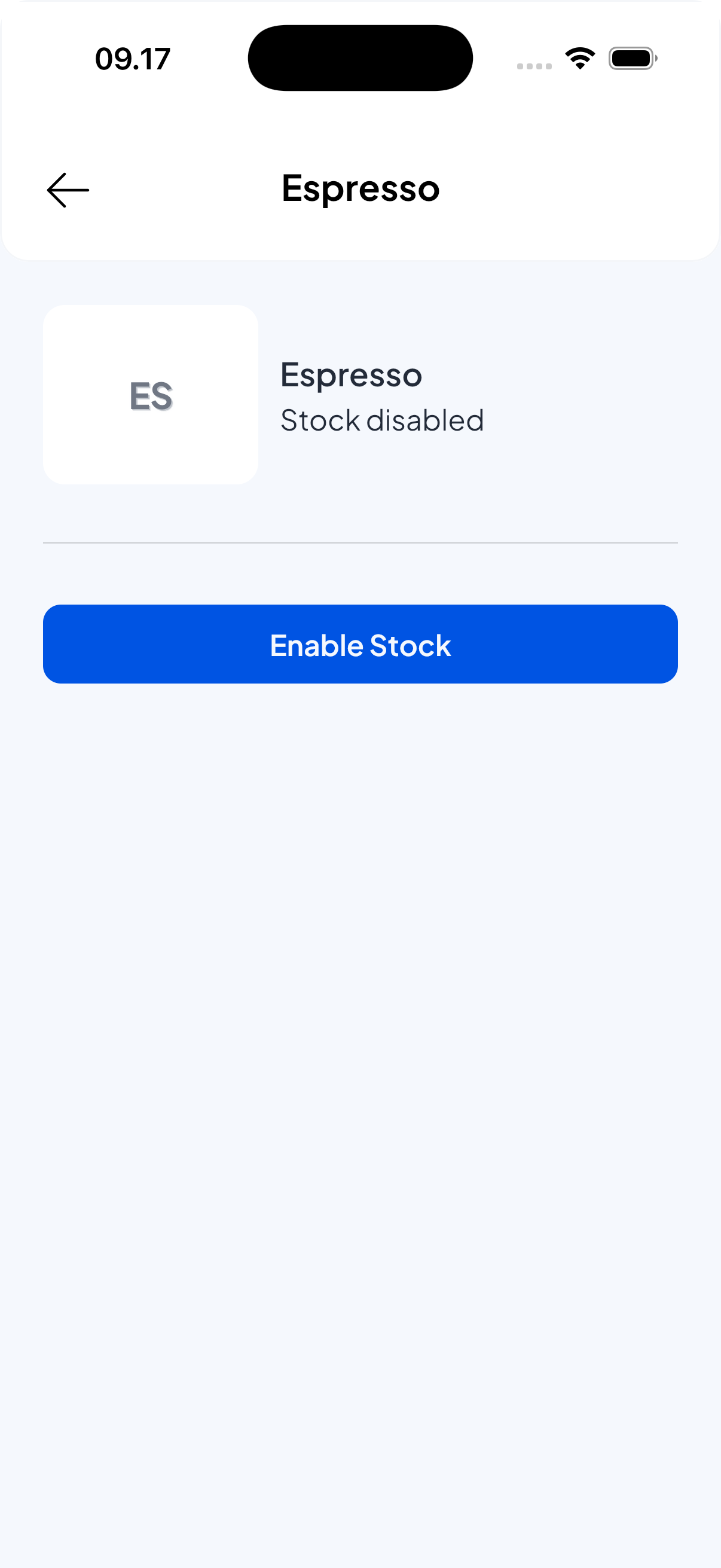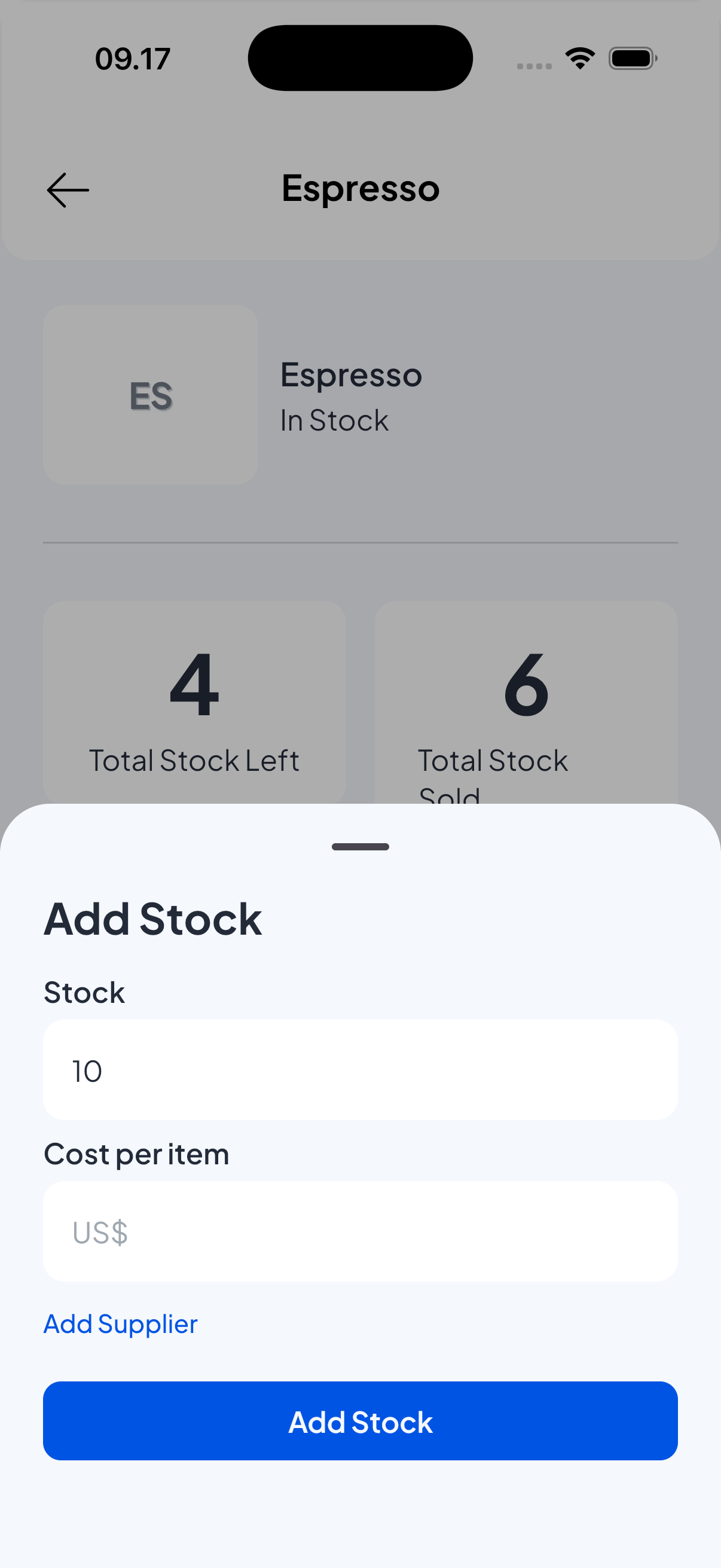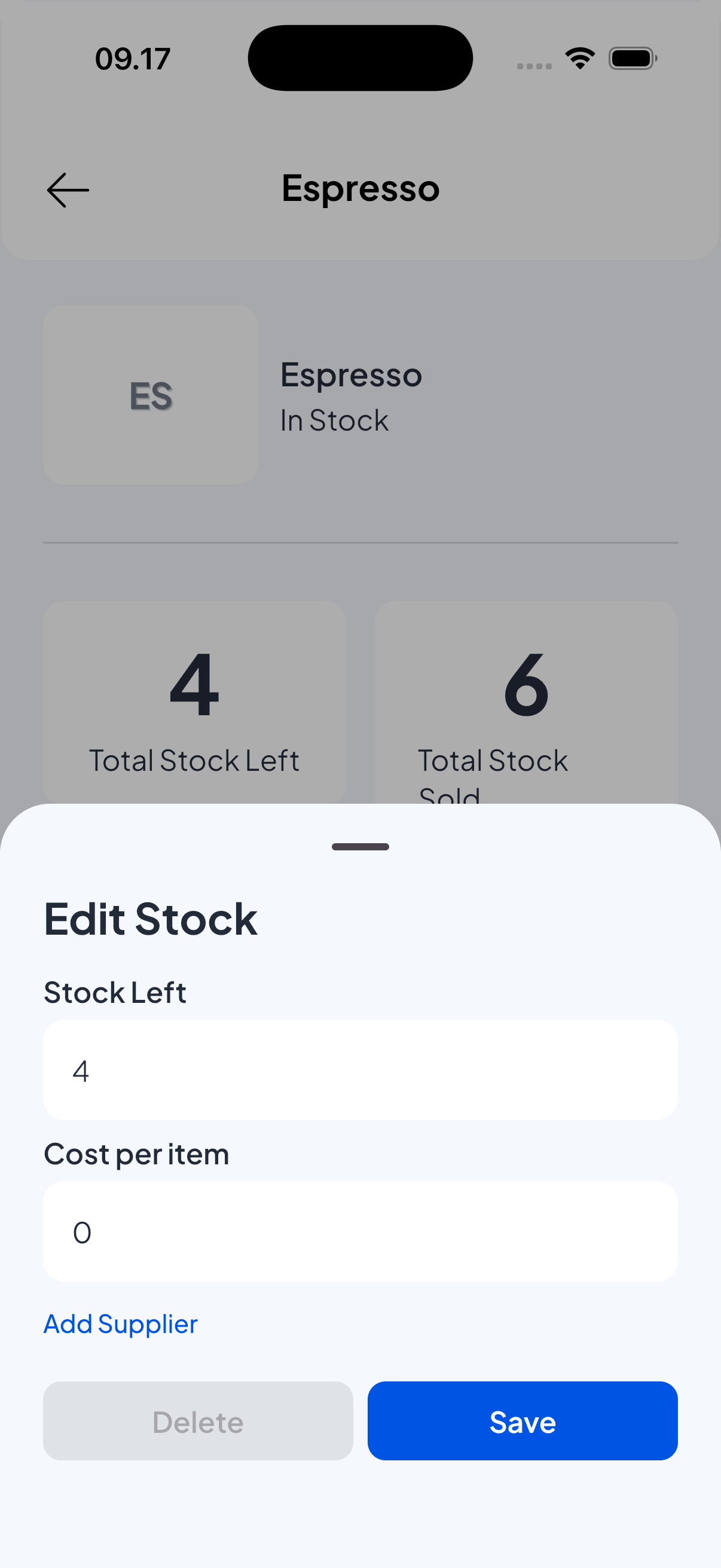Stock tracking
Salesmaster tracks stock quantities so you know when to reorder and can reconcile inventory with sales.
This page explains how stock is recorded, what a "stock receipt" is, how stock is consumed, and the rules for editing or deleting stock records.
Stock usage
-
When inventory tracking is enabled, every completed Sale will create a stock-used history entry for the item(s) sold. The system records how many units were used (the quantity entered on the Sale screen) and reduces on-hand quantity accordingly. This per-sale stock usage is what the Manage Stock screen and reports use to compute remaining stock and COGS.
-
Stock consumption follows FIFO (first-in, first-out): older stock receipts are consumed first when computing which received units were used by a Sale. See the "stock receipt" and "Edit stock entries" sections for details on how this affects edits and deletions.
Enable inventory for an item

- Inventory tracking must be turned on per item. Open the item (Add or Edit) and enable the "Stock tracking" (or "Track inventory") option.
- If tracking is disabled for an item, selling that item will not decrement stock.
Add stock (create a stock receipt)

- Open Catalog > List Items and select the item you want to add stock for.
- From the item menu choose Manage Stock and click Add Stock.
- Fill the add-stock form:
- Quantity — how many units you received.
- Cost per unit — optional; useful for valuation and reports.
- Supplier — optional; select Supplier for the stock receipt.
- Notes — optional (delivery or invoice reference).
- Save/Add Stock. The system creates a new stock receipt and increases the on-hand quantity immediately. The receipt is recorded in stock history.
Edit stock entries

- In the Manage Stock screen you'll see individual stock receipt entries. You can edit the quantity or cost for stock receipts to increase or decrease it.
- When you edit a receipt entry, the app will show the remaining quantity available (original received minus units already sold), and you can only reduce unused quantities yet.
Delete stock entries
- Stock receipt entries can typically only be deleted if none of the received units have been used in a sale. If any units from that receipt were sold, deletion is usually blocked to preserve transaction history.
- If deletion is blocked, consider creating a negative adjustment (remove quantity) for the stock receipt.
Related pages
- Suppliers - manage your suppliers of stock.